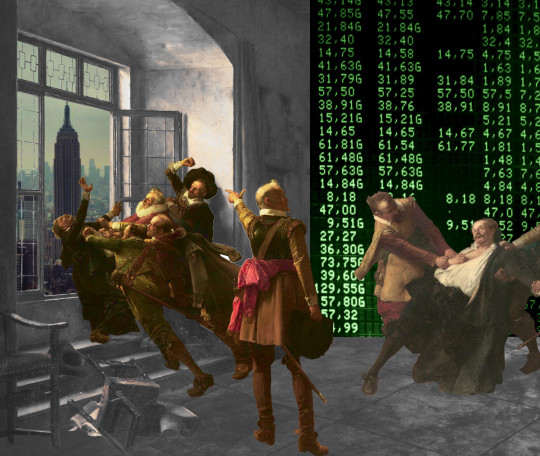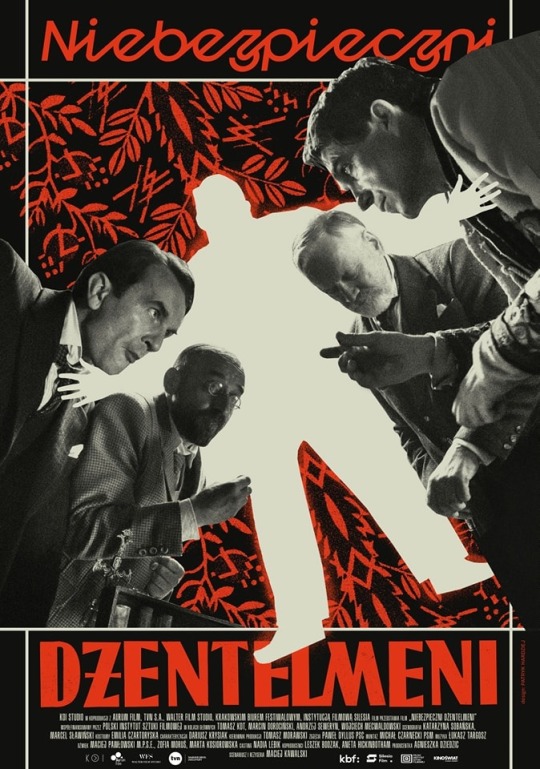#spacs
Text
How to shatter the class solidarity of the ruling class

I'm touring my new, nationally bestselling novel The Bezzle! Catch me WEDNESDAY (Apr 11) at UCLA, then Chicago (Apr 17), Torino (Apr 21) Marin County (Apr 27), Winnipeg (May 2), Calgary (May 3), Vancouver (May 4), and beyond!

Audre Lorde counsels us that "The Master's Tools Will Never Dismantle the Master's House," while MLK said "the law cannot make a man love me, but it can restrain him from lynching me." Somewhere between replacing the system and using the system lies a pragmatic – if easily derailed – course.
Lorde is telling us that a rotten system can't be redeemed by using its own chosen reform mechanisms. King's telling us that unless we live, we can't fight – so anything within the system that makes it easier for your comrades to fight on can hasten the end of the system.
Take the problems of journalism. One old model of journalism funding involved wealthy newspaper families profiting handsomely by selling local appliance store owners the right to reach the townspeople who wanted to read sports-scores. These families expressed their patrician love of their town by peeling off some of those profits to pay reporters to sit through municipal council meetings or even travel overseas and get shot at.
In retrospect, this wasn't ever going to be a stable arrangement. It relied on both the inconstant generosity of newspaper barons and the absence of a superior way to show washing-machine ads to people who might want to buy washing machines. Neither of these were good long-term bets. Not only were newspaper barons easily distracted from their sense of patrician duty (especially when their own power was called into question), but there were lots of better ways to connect buyers and sellers lurking in potentia.
All of this was grossly exacerbated by tech monopolies. Tech barons aren't smarter or more evil than newspaper barons, but they have better tools, and so now they take 51 cents out of every ad dollar and 30 cents out of ever subscriber dollar and they refuse to deliver the news to users who explicitly requested it, unless the news company pays them a bribe to "boost" their posts:
https://www.eff.org/deeplinks/2023/04/saving-news-big-tech
The news is important, and people sign up to make, digest, and discuss the news for many non-economic reasons, which means that the news continues to struggle along, despite all the economic impediments and the vulture capitalists and tech monopolists who fight one another for which one will get to take the biggest bite out of the press. We've got outstanding nonprofit news outlets like Propublica, journalist-owned outlets like 404 Media, and crowdfunded reporters like Molly White (and winner-take-all outlets like the New York Times).
But as Hamilton Nolan points out, "that pot of money…is only large enough to produce a small fraction of the journalism that was being produced in past generations":
https://www.hamiltonnolan.com/p/what-will-replace-advertising-revenue
For Nolan, "public funding of journalism is the only way to fix this…If we accept that journalism is not just a business or a form of entertainment but a public good, then funding it with public money makes perfect sense":
https://www.hamiltonnolan.com/p/public-funding-of-journalism-is-the
Having grown up in Canada – under the CBC – and then lived for a quarter of my life in the UK – under the BBC – I am very enthusiastic about Nolan's solution. There are obvious problems with publicly funded journalism, like the politicization of news coverage:
https://www.theguardian.com/media/2023/jan/24/panel-approving-richard-sharp-as-bbc-chair-included-tory-party-donor
And the transformation of the funding into a cheap political football:
https://www.cbc.ca/news/politics/poilievre-defund-cbc-change-law-1.6810434
But the worst version of those problems is still better than the best version of the private-equity-funded model of news production.
But Nolan notes the emergence of a new form of hedge fund news, one that is awfully promising, and also terribly fraught: Hunterbrook Media, an investigative news outlet owned by short-sellers who pay journalists to research and publish damning reports on companies they hold a short position on:
https://hntrbrk.com/
For those of you who are blissfully distant from the machinations of the financial markets, "short selling" is a wager that a company's stock price will go down. A gambler who takes a short position on a company's stock can make a lot of money if the company stumbles or fails altogether (but if the company does well, the short can suffer literally unlimited losses).
Shorts have historically paid analysts to dig into companies and uncover the sins hidden on their balance-sheets, but as Matt Levine points out, journalists work for a fraction of the price of analysts and are at least as good at uncovering dirt as MBAs are:
https://www.bloomberg.com/opinion/articles/2024-04-02/a-hedge-fund-that-s-also-a-newspaper
What's more, shorts who discover dirt on a company still need to convince journalists to publicize their findings and trigger the sell-off that makes their short position pay off. Shorts who own a muckraking journalistic operation can skip this step: they are the journalists.
There's a way in which this is sheer genius. Well-funded shorts who don't care about the news per se can still be motivated into funding freely available, high-quality investigative journalism about corporate malfeasance (notoriously, one of the least attractive forms of journalism for advertisers). They can pay journalists top dollar – even bid against each other for the most talented journalists – and supply them with all the tools they need to ply their trade. A short won't ever try the kind of bullshit the owners of Vice pulled, paying themselves millions while their journalists lose access to Lexisnexis or the PACER database:
https://pluralistic.net/2024/02/24/anti-posse/#when-you-absolutely-positively-dont-give-a-solitary-single-fuck
The shorts whose journalists are best equipped stand to make the most money. What's not to like?
Well, the issue here is whether the ruling class's sense of solidarity is stronger than its greed. The wealthy have historically oscillated between real solidarity (think of the ultrawealthy lobbying to support bipartisan votes for tax cuts and bailouts) and "war of all against all" (as when wealthy colonizers dragged their countries into WWI after the supply of countries to steal ran out).
After all, the reason companies engage in the scams that shorts reveal is that they are profitable. "Behind every great fortune is a great crime," and that's just great. You don't win the game when you get into heaven, you win it when you get into the Forbes Rich List.
Take monopolies: investors like the upside of backing an upstart company that gobbles up some staid industry's margins – Amazon vs publishing, say, or Uber vs taxis. But while there's a lot of upside in that move, there's also a lot of risk: most companies that set out to "disrupt" an industry sink, taking their investors' capital down with them.
Contrast that with monopolies: backing a company that merges with its rivals and buys every small company that might someday grow large is a sure thing. Shriven of "wasteful competition," a company can lower quality, raise prices, capture its regulators, screw its workers and suppliers and laugh all the way to Davos. A big enough company can ignore the complaints of those workers, customers and regulators. They're not just too big to fail. They're not just too big to jail. They're too big to care:
https://pluralistic.net/2024/04/04/teach-me-how-to-shruggie/#kagi
Would-be monopolists are stuck in a high-stakes Prisoner's Dilemma. If they cooperate, they can screw over everyone else and get unimaginably rich. But if one party defects, they can raid the monopolist's margins, short its stock, and snitch to its regulators.
It's true that there's a clear incentive for hedge-fund managers to fund investigative journalism into other hedge-fund managers' portfolio companies. But it would be even more profitable for both of those hedgies to join forces and collude to screw the rest of us over. So long as they mistrust each other, we might see some benefit from that adversarial relationship. But the point of the 0.1% is that there aren't very many of them. The Aspen Institute can rent a hall that will hold an appreciable fraction of that crowd. They buy their private jets and bespoke suits and powdered rhino horn from the same exclusive sellers. Their kids go to the same elite schools. They know each other, and they have every opportunity to get drunk together at a charity ball or a society wedding and cook up a plan to join forces.
This is the problem at the core of "mechanism design" grounded in "rational self-interest." If you try to create a system where people do the right thing because they're selfish assholes, you normalize being a selfish asshole. Eventually, the selfish assholes form a cozy little League of Selfish Assholes and turn on the rest of us.
Appeals to morality don't work on unethical people, but appeals to immorality crowds out ethics. Take the ancient split between "free software" (software that is designed to maximize the freedom of the people who use it) and "open source software" (identical to free software, but promoted as a better way to make robust code through transparency and peer review).
Over the years, open source – an appeal to your own selfish need for better code – triumphed over free software, and its appeal to the ethics of a world of "software freedom." But it turns out that while the difference between "open" and "free" was once mere semantics, it's fully possible to decouple the two. Today, we have lots of "open source": you can see the code that Google, Microsoft, Apple and Facebook uses, and even contribute your labor to it for free. But you can't actually decide how the software you write works, because it all takes a loop through Google, Microsoft, Apple or Facebook's servers, and only those trillion-dollar tech monopolists have the software freedom to determine how those servers work:
https://pluralistic.net/2020/05/04/which-side-are-you-on/#tivoization-and-beyond
That's ruling class solidarity. The Big Tech firms have hidden a myriad of sins beneath their bafflegab and balance-sheets. These (as yet) undiscovered scams constitute a "bezzle," which JK Galbraith defined as "the magic interval when a confidence trickster knows he has the money he has appropriated but the victim does not yet understand that he has lost it."
The purpose of Hunterbrook is to discover and destroy bezzles, hastening the moment of realization that the wealth we all feel in a world of seemingly orderly technology is really an illusion. Hunterbrook certainly has its pick of bezzles to choose from, because we are living in a Golden Age of the Bezzle.
Which is why I titled my new novel The Bezzle. It's a tale of high-tech finance scams, starring my two-fisted forensic accountant Marty Hench, and in this volume, Hench is called upon to unwind a predatory prison-tech scam that victimizes the most vulnerable people in America – our army of prisoners – and their families:
https://us.macmillan.com/books/9781250865878/thebezzle
The scheme I fictionalize in The Bezzle is very real. Prison-tech monopolists like Securus and Viapath bribe prison officials to abolish calls, in-person visits, mail and parcels, then they supply prisoners with "free" tablets where they pay hugely inflated rates to receive mail, speak to their families, and access ebooks, distance education and other electronic media:
https://pluralistic.net/2024/04/02/captive-customers/#guillotine-watch
But a group of activists have cornered these high-tech predators, run them to ground and driven them to the brink of extinction, and they've done it using "the master's tools" – with appeals to regulators and the finance sector itself.
Writing for The Appeal, Dana Floberg and Morgan Duckett describe the campaign they waged with Worth Rises to bankrupt the prison-tech sector:
https://theappeal.org/securus-bankruptcy-prison-telecom-industry/
Here's the headline figure: Securus is $1.8 billion in debt, and it has eight months to find a financier or it will go bust. What's more, all the creditors it might reasonably approach have rejected its overtures, and its bonds have been downrated to junk status. It's a dead duck.
Even better is how this happened. Securus's debt problems started with its acquisition, a leveraged buyout by Platinum Equity, who borrowed heavily against the firm and then looted it with bogus "management fees" that meant that the debt continued to grow, despite Securus's $700m in annual revenue from America's prisoners. Platinum was just the last in a long line of PE companies that loaded up Securus with debt and merged it with its competitors, who were also mortgaged to make profits for other private equity funds.
For years, Securus and Platinum were able to service their debt and roll it over when it came due. But after Worth Rises got NYC to pass a law making jail calls free, creditors started to back away from Securus. It's one thing for Securus to charge $18 for a local call from a prison when it's splitting the money with the city jail system. But when that $18 needs to be paid by the city, they're going to demand much lower prices. To make things worse for Securus, prison reformers got similar laws passed in San Francisco and in Connecticut.
Securus tried to outrun its problems by gobbling up one of its major rivals, Icsolutions, but Worth Rises and its coalition convinced regulators at the FCC to block the merger. Securus abandoned the deal:
https://worthrises.org/blogpost/securusmerger
Then, Worth Rises targeted Platinum Equity, going after the pension funds and other investors whose capital Platinum used to keep Securus going. The massive negative press campaign led to eight-figure disinvestments:
https://www.latimes.com/business/story/2019-09-05/la-fi-tom-gores-securus-prison-phone-mass-incarceration
Now, Securus's debt became "distressed," trading at $0.47 on the dollar. A brief, covid-fueled reprieve gave Securus a temporary lifeline, as prisoners' families were barred from in-person visits and had to pay Securus's rates to talk to their incarcerated loved ones. But after lockdown, Securus's troubles picked up right where they left off.
They targeted Platinum's founder, Tom Gores, who papered over his bloody fortune by styling himself as a philanthropist and sports-team owner. After a campaign by Worth Rises and Color of Change, Gores was kicked off the Los Angeles County Museum of Art board. When Gores tried to flip Securus to a SPAC – the same scam Trump pulled with Truth Social – the negative publicity about Securus's unsound morals and financials killed the deal:
https://twitter.com/WorthRises/status/1578034977828384769
Meanwhile, more states and cities are making prisoners' communications free, further worsening Securus's finances:
https://pluralistic.net/2024/02/14/minnesota-nice/#shitty-technology-adoption-curve
Congress passed the Martha Wright-Reed Just and Reasonable Communications Act, giving the FCC the power to regulate the price of federal prisoners' communications. Securus's debt prices tumbled further:
https://www.govtrack.us/congress/bills/117/s1541
Securus's debts were coming due: it owes $1.3b in 2024, and hundreds of millions more in 2025. Platinum has promised a $400m cash infusion, but that didn't sway S&P Global, a bond-rating agency that re-rated Securus's bonds as "CCC" (compare with "AAA"). Moody's concurred. Now, Securus is stuck selling junk-bonds:
https://www.govtrack.us/congress/bills/117/s1541
The company's creditors have given Securus an eight-month runway to find a new lender before they force it into bankruptcy. The company's debt is trading at $0.08 on the dollar.
Securus's major competitor is Viapath (prison tech is a duopoly). Viapath is also debt-burdened and desperate, thanks to a parallel campaign by Worth Rises, and has tried all of Securus's tricks, and failed:
https://pestakeholder.org/news/american-securities-fails-to-sell-prison-telecom-company-viapath/
Viapath's debts are due next year, and if Securus tanks, no one in their right mind will give Viapath a dime. They're the walking dead.
Worth Rise's brilliant guerrilla warfare against prison-tech and its private equity backers are a master class in using the master's tools to dismantle the master's house. The finance sector isn't a friend of justice or working people, but sometimes it can be used tactically against financialization itself. To paraphrase MLK, "finance can't make a corporation love you, but it can stop a corporation from destroying you."
Yes, the ruling class finds solidarity at the most unexpected moments, and yes, it's easy for appeals to greed to institutionalize greediness. But whether it's funding unbezzling journalism through short selling, or freeing prisons by brandishing their cooked balance-sheets in the faces of bond-rating agencies, there's a lot of good we can do on the way to dismantling the system.

If you'd like an essay-formatted version of this post to read or share, here's a link to it on pluralistic.net, my surveillance-free, ad-free, tracker-free blog:
https://pluralistic.net/2024/04/08/money-talks/#bullshit-walks

Image:
KMJ (modified)
https://commons.wikimedia.org/wiki/File:Boerse_01_KMJ.jpg
CC BY-SA 3.0
https://creativecommons.org/licenses/by-sa/3.0/deed.en
#pluralistic#shorts#short sellers#news#private equity#private prisons#securus#prison profiteers#the bezzle#anything that cant go on forever eventually stop#steins law#hamilton nolan#Platinum Equity#American Securities#viapath#global tellink#debt#jpay#worth rises#insurance#spacs#fcc#bond rating#moodys#the appeal#saving the news from big tech#hunterbrook media#journalism
777 notes
·
View notes
Text
Insights on IPOs and SPACs, climate, shared services from PCAOB
By Daniel Hood 2
The board's target team shared the results of its in-depth exploration of emerging audit risk.
0 notes
Text
Special Purpose Acquisition Companies (SPAC) - Structuring, Accounting, and Risk Management
Special Purpose Acquisition Companies (SPACs) have emerged as a noteworthy alternative to traditional initial public offerings (IPOs) in recent years, providing a unique avenue for companies to access public markets. While the allure of SPACs continues to grow, they are not without their complexities. Gaining a transactional understanding of SPACs is just the tip of the iceberg. Professionals venturing into this arena also face intricate accounting challenges, especially when navigating the divergent landscapes of US GAAP and IFRS. Beyond accounting, there's a plethora of risk management issues to be addressed, ranging from regulatory concerns to market uncertainties. As SPACs continue to gain traction, a holistic understanding of these critical aspects becomes imperative for stakeholders.
Shasat, a prominent name in the financial education sphere, has recently unveiled a comprehensive two-day course that promises to be a game-changer for financial professionals, accountants, legal experts, and all those vested in the world of finance. The course, titled "Special Purpose Acquisition Companies (SPACs) Accounting & Structuring: Mastering US GAAP and IFRS," is set to become a cornerstone in understanding the intricate world of SPACs, their structures, and the accounting principles governing them under US GAAP and IFRS.
SPACs, or Special Purpose Acquisition Companies, have garnered considerable attention as an alternative to the traditional Initial Public Offerings (IPOs) in recent years. Shasat's new program is tailor-made to provide a profound understanding of SPACs, their inner workings, and the regulatory framework that surrounds them. The course aims to equip participants with the knowledge and skills to navigate the complex landscape of SPAC transactions confidently.
What sets this course apart is the expertise of its instructors. Shasat has assembled a team of seasoned professionals who will guide participants through the essential aspects of SPACs, covering everything from the key players in SPAC transactions to the capital-raising process and the various stages involved.
Participants will delve into the diverse landscape of SPACs, exploring the different types available, their unique features, and the associated risks and benefits of investing in them. This comprehensive understanding of SPACs sets the stage for in-depth exploration of the accounting and financial reporting requirements specific to SPAC transactions under both US GAAP and IFRS.
The program will not merely scratch the surface of accounting treatment for SPACs; it will delve deep into financial statement preparation, disclosure requirements, and the intricacies of regulatory compliance. Participants will emerge with a thorough grasp of how SPAC transactions are accounted for, setting them apart in their professional careers.
One of the most critical components of SPAC transactions is the structuring of equity instruments. Shasat's course will provide participants with an in-depth understanding of the various equity instruments utilized in SPAC transactions, including common stock, warrants, and rights.
This knowledge will be invaluable as participants explore the associated risks, legal considerations, pricing strategies, and allocation techniques for these instruments. In essence, by the end of the course, participants will have a practical understanding of equity instruments used in SPAC transactions and the crucial considerations involved in their structuring.
The benefits of this program extend far beyond theoretical knowledge. Upon completing the course, participants will have a practical, hands-on understanding of the essential elements of SPACs, their structures, accounting intricacies, and the regulatory requirements associated with them under both US GAAP and IFRS. Armed with this knowledge, they will be prepared to navigate the often complex world of SPAC transactions with confidence and clarity.
Shasat's commitment to providing a comprehensive learning experience is clearly reflected in the key learning features offered by the course. Participants can expect to develop a deep understanding of Special Purpose Acquisition Companies (SPACs) and their significance within the financial market. They will also acquire knowledge of various structuring techniques commonly employed in SPAC transactions, along with a thorough understanding of the regulatory requirements and disclosure considerations associated with these transactions.
Moreover, participants will master the intricacies of accounting for SPAC transactions under both US Generally Accepted Accounting Principles (GAAP) and International Financial Reporting Standards (IFRS). This includes the preparation of financial statements and pro forma financial statements. The course also delves into the role of auditors in SPAC transactions and provides insights into audit requirements.
To enhance the practical application of this knowledge, participants will gain valuable insights from industry experts and practitioners. They will actively engage in interactive case studies and group discussions to apply their newly acquired skills. Additionally, the course offers an opportunity to build a network of peers and industry professionals specializing in the SPAC domain, further enriching the learning experience.
The program is being conducted at various locations, making it accessible to a global audience. Here is the schedule of upcoming programs by Shasat. However, we recommend you continue to visit Shasat's website for the most up-to-date program schedules.
SPAC Accounting & Structuring: Mastering US GAAP and IFRS | GID 53001 | Chicago: Dec. 6-7, 2023
SPAC Accounting & Structuring: Mastering US GAAP and IFRS | GID 53002 | Miami: Dec. 20-2,1 2023
SPAC Accounting & Structuring: Mastering US GAAP and IFRS | GID 53003 | New York: Dec. 14-15, 2023
SPAC Accounting & Structuring: Mastering US GAAP and IFRS | GID 53004 | London: Nov. 9-10, 2023
SPAC Accounting & Structuring: Mastering US GAAP and IFRS | GID 53005 | Singapore | Oct. 20-21, 2023
SPAC Accounting & Structuring: Mastering US GAAP and IFRS | GID 53006 | San Francisco: Oct. 12-13, 2023
SPAC Accounting & Structuring: Mastering US GAAP and IFRS | Zurich: Nov. 13-14, 2023
SPAC Accounting & Structuring: Mastering US GAAP and IFRS | GID 53008 | GID 53007 | Toronto: Oct. 27-28, 2023
SPAC Accounting & Structuring: Mastering US GAAP and IFRS | GID 53000 | Online | In-House | Available on Request
For more details and to enrol in US GAAP Courses, please visit:
https://shasat.co.uk/product-category/us-gaap-courses/
Shasat's launch of the SPAC Accounting & Structuring course is a significant step forward in the world of financial education. This program promises to empower professionals with the knowledge and skills needed to excel in the dynamic and rapidly evolving landscape of SPAC transactions. For those looking to stay ahead in the financial industry, this course is a must-consider opportunity.
#SPACs#Finance Education#US GAAP#IFRS#Financial Reporting#Accounting Standards#Financial Transactions#Structuring
0 notes
Text
Accounting Cases Involving SPACs
Accounting Cases Involving SPACs
The Accounting Class Action Filings and Settlements—2021 Review and Analysis report features a spotlight section on accounting-related SPAC cases.
Special purpose acquisition companies (SPACs) have become an increasingly popular way for private companies to become publicly traded. The process typically proceeds through four phases:
The SPAC initial public offering (IPO), when the SPAC becomes…

View On WordPress
#accounting#business#cornerstone#De-SPAC#Finance#IPO#legal#mergers#Regulatory#SEC#securities#SPACs#special purpose acquisition companies
0 notes
Text
companies targeting towards gay people:


me and my gay friends:


#shitpost#nwm co to jest 2 w nocy i powinnam isc spac#niebezpieczni dżentelmeni#dangerous men#1670#1670 netflix#polblr
853 notes
·
View notes
Text
SPACs are "an interesting animal" for D&O insurers
SPACs are “an interesting animal” for D&O insurers
“What’s driving this is, of course, the new capacity that has come in the past few years,” said Choo. “But what is also contributing is the slowdown in companies going public and the new business premiums those risks generate. That has created more competition for renewals, particularly for those public companies with good fundamentals. All but the most difficult risks should face a much…
View On WordPress
0 notes
Text
Why SPACS Are Flailing as Market Conditions Shift
Why SPACS Are Flailing as Market Conditions Shift
Matt Higgins, a former judge on the reality TV show “Shark Tank,” is an experienced investor whose firm, RSE Ventures, helps young companies build their businesses.
So it was no surprise that in November 2020, Mr. Higgins embraced one of Wall Street’s biggest recent obsessions by launching a SPAC. Special purpose acquisition companies — known by their acronym — are shell entities that sell shares…
View On WordPress
0 notes
Text


green suit defender till i croak. he did that for the lgbtq nation
#red dwarf#arnold rimmer#red dwarf rimmer#spacs gays be wearing chanel boots#that said i think rimmer would hate luke skywalker
316 notes
·
View notes
Text

no i co
#czy moglam przetlumaczyc no moglam ale mi sie nie chce#sonic#metal sonic#doodle#sonic the hedgehog#sonik no#ale gowno ide spac czy co xd
198 notes
·
View notes
Text
Concept: the justice league finds out that Blaze and Satanus, the rulers of hell, are kids of their ‘even more of a boy scout than Superman’ coworker’s “boss” and think Shazam is the Christian God. They ask Billy really vague questions that lead Billy into confusing them even more and they become convinced that Marvel’s Wizard guy is God with a capital G and Marvel’s either an angel or the second coming of Jesus.
Meanwhile Shazam doesn’t even know what the Bible is and his knowledge about religion is so outdated he still thinks Solomon’s Judaism is new age and not worth his time to research such a ‘fad’ religion, but he knows humans will make a religion out of anything as well as bastardize existing ones and very well could have mixed up actual tales that involve him, his allies, and his children into some sort of melting pot of a religion.
So when someone finally asks Marvel outright if his “boss” is God, Billy goes ‘wait… old guy in white robes and sandals, with long white hair and a beard… lives in space… aka the “heavens”, whose a ghost(Holy Spirit), and knows everything(historama)??? I need to dig deeper into this hold on guys’ and goes off to ask the wizard.
So when Billy asks the Wizard he just tells Billy “well, my boy, if so many things match up, maybe it is so and the tales of myself and my champions grew so estranged from their origins or mixed in with other beliefs that it can explain the things that aren’t true to our reality.”
Then The Canonical Character To The DC Universe, Jesus of Nazareth, shows up.
#billy batson#shazam#dc captain marvel#dc comics#I really like religious history and folklore and that’s sort of what really got me into Shazam#Fawcett and DC’s interpretations are all so weird and conflicting just like actual religious history lol#I think comic books really capture the essence of the ancient myth very well#there’s so many different interpretations of a character with conflicting lore and so many writers across the decades#Batman: for the LAST FUCKING TIME our coworker is NOT Jesus#Guy Gardener: The man fights demons called The Seven Deadly Sins and follows orders from some guy he says lives in space also isn’t in spac#Guy: what the fuck else are we supposed to think?
206 notes
·
View notes
Text


#pandora hearts#gilbert nightray#vincent nightray#oz vessalius#alice pandora hearts#elliot nightray#anyways this is shoddily put together but dont worry about it shh ts fine#fokron speaks#ph#also i probably definitely missed some i think.#also someone has surely done this before but SHHHH.... DONT WORRY ABOUT IT#also sorry for empty spac i just assumed i would be able to fill it and tbh i probably would with better formatting but i dont wnna fuck wi#with it anymore
268 notes
·
View notes
Text


Helix Nebula (NGC 7293)
Credit: Jason Major
1K notes
·
View notes
Text

today marks the start of my journey to draw (almost) all the Omori bosses :D
#First up is Captain Spac- I mean Space Boyf- I mean Space Ex Boyfr- I mean Space Husb- I mean Space Ex Hus- I mean yeah Captain Spaceboy#shhh let’s not talk about how his jacket is the wrong colour#captain spaceboy#Omori#omori spaceboy#space boyfriend#space ex boyfriend#space ex husband#omori fandom#omori fanart#headspace#otherworld#his pink hair is so cuteee#omori captain spaceboy#space boy fanart#capt spaceboy#omori art
375 notes
·
View notes
Text
Fuck you. Red Dwarf: Better Than Life novel fanart

"Lister did something then he wouldn't have done in any other circumstances whatsoever. He started to eat a sofa.
This seemed to go down well. There was a cacophony of whirrs, clicks and whistles, and the cockroaches circled in delight.
'Well, it's been absolutely wonderful,' Lister found himself saying. 'Terrific place you've got here,' he said to the mother roach. 'And you serve a wicked rotting sofa. But I really must be going.' He nodded, threw in a few clicks and whistles for good measure, and climbed on the first roach's back. It waddled speedily down the length of the cave, and flung itself over the mountain side. "
#red dwarf#infinity welcomes careful drivers arrived today!!! im tempted to read it at school tomorrow but its dr who day :/ i should honour the doc#better than life#my first rd fanart ever :)) the earth lore is so dark holy shit fuck#imagine you woke up some day and every human was dead but you and you had no one to return to so you figure#guess ill just fly back to earth and see if its still there. what else would i do#and then you crash landed on an ice world and then the ice age suddenly fucking ended and there was garbage everywhere and acid was raining#and slowly but surely you realize; after you narrowly escape acid rain and fire rain; that this IS earth#because while you were sleeping Earth was designated Garbage World and all the Garbage was dumped there and it just flew away off into spac#and then you were left to your own devices on the garbage planet with 8ft roaches on it for 34 fucking years#anyway. im normal about it.
46 notes
·
View notes
Text
wizard fashion: 19th century edition





























as a result of my minor addiction to those wizarding fashion meta posts, i compiled this moodboard of (mostly) 19th century fashion that feels decidedly magical to me. there are so many gorgeous capes and opera cloaks from this time period that are super inspiring when picturing the kinds of clothes that wizards (especially those lavish old money wizards!) would wear. deep vibrant velvets, shimmery flowing silks, fluffy fur trims, enchanted embroidery that starts moving when you look at it long enough... gah, i'm in love. i think victorian fashion is simultaneously gaudy and flamboyant while also looking proper and classy, which is exactly what i imagined!
note: a lot of these images are from the met, and i highly recommend checking out their amazingly detailed archive for more! also shoutout to the wardrobe of countess greffulhe (the og influencer), as well as the house of worth (the og haute couture brand)
#i say mostly 19th century because some early 20th slipped in here too...#also it took a stupid amount of time to arrange these in an order i liked lollll. so many cropping things and combining images to save spac#my post#hp#hp meta#hp fashion#harry potter fandom#wizarding world#hp fandom#harry potter meta#harry potter aesthetic#hp aesthetic
47 notes
·
View notes
Text

32x32 pixel art of Hubble's photo of the Crab nebula.
I've been taking a light break by slowing down art production for a while, but not stopping.
#pixel art#crab nebula#hubble#space#art#scifi#nebula#spac eart#astro art#universe#scifi art#cosmos#green#digital art#stars#artists on tumblr
50 notes
·
View notes